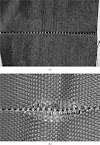Textile Yarn Numbering System (What Is Thread Count?)
Numbering System |
Unit of Length (L) | Unit of Weight (W) |
|---|---|---|
| Tex System (Tex) | 1000 meters | No. of grams |
| Denier (D) | 9000 meters | No. of grams |
| Decitex (dtex) | 10,000 meters | No. of grams |
| Jute Count | 14,400 yards | No. of pounds |
| Grex Count | 10,000 meters | No. of grams |
| Linen Count | 14,400 yards | No. of pounds |
Numbering System |
Unit of Length (L) | Unit of Weight (W) |
|---|---|---|
| English Cotton Count (Ne) | 840 yards | 1 pound (lb) |
| Metric Count (Nm) | 1000 meters (1Km) | 1 Kg |
| Woolen Count (YSM) | 256 yards | 1 pound (lb) |
| Worsted Count (Nek) | 1 pound (lb) | No. of grams |
| Linen Count | 300 yards | 1 pound (lb) |
| French Cotton Count | 1000 meters | 500 grams |
Single Ply, Two-Ply and Three-Ply
Ply is how many yarns are twisted together to make a single
thread. Fabrics can either be two-ply or single ply. Two-ply means that two
yarns are twisted together to make a single thread that is then woven into the
fabric. (Note that this is not at all like two-ply toilet paper!). Two-ply
fabrics are generally superior to single-ply fabrics.
120s to 140s are regarded as very premium fabrics having a
smooth finish and being light-weight. 2-ply 80s and 2-ply 100s are best suited
for professionals and for office wear as fabrics in these counts offer the most
wrinkle resistance and crisp standing. Single 70s are usually satin weave
counts which are in a construction that falls well. These are many times used
for women garments as they drape very well. 50s and 60s are used for a major
portion of the everyday formal and casual shirts. 40s counts are usually only
used for garments and bulk shirts supply.
Thread count is not only one aspect while selecting fabrics.
The weave, ply and construction amongst other factors play an important role in
the overall fabric quality.
For example, 120’s thread count means that two 60’s yarns
are twisted together. Generally this fabric will be more durable than a 60’s
single ply, but it won’t necessarily be smoother. 140’s thread counts are
typically two 70’s yarns twisted together. And so on and so forth.












0 Comments
If you have any doubts, please don't hesitate to ask